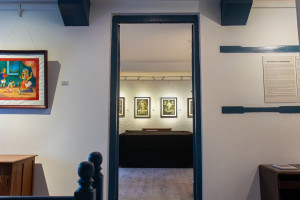Arts
Art in the age of Covid-19
Gallery Mcube’s ‘Made in Mind Series II’, a virtual, video exhibition surrounding the pandemic, has put together the works of 52 artists from across the world.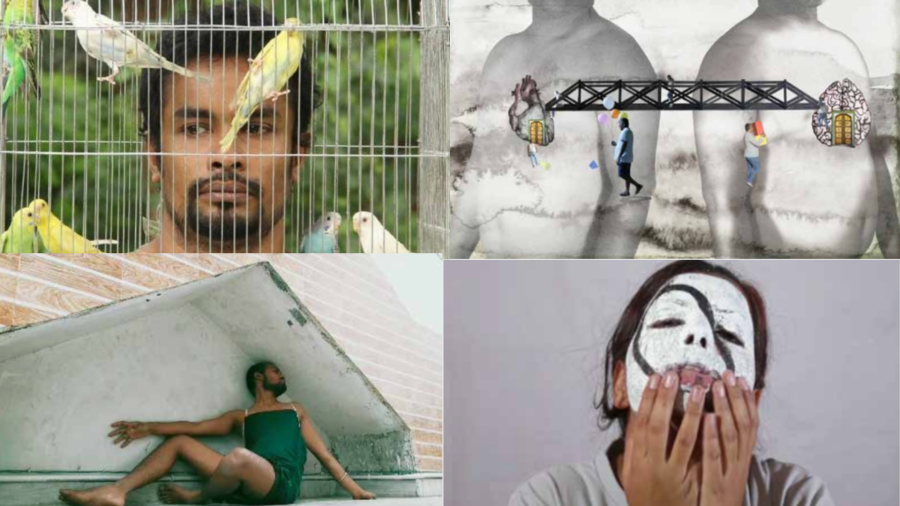
Ankit Khadgi
The face of a man, caged, stares at the camera. Inside the cage, there are birds—trapped with the man, fluttering, chirping around anxiously inside the cage’s limited space. For two minutes, viewers are shown this clip. The clip’s intention is simple: it is a reflection of people’s reality during lockdown, when they too were caged and had limited freedom of movement, just like the birds that humans cage for their entertainment.
The latest virtual exhibition, ‘Made in Mind Series II’, curated by artist and curator Manish Lal Shrestha of Gallery Mcube, which experiments with video art, has put together interesting works by 52 artists from countries like Nepal, India, Pakistan, Bangladesh, China, Italy. The video art expresses the artists’ emotions and thoughts surrounding the current pandemic.
But it is not that the entire exhibition, which is divided into four different parts and is uploaded on YouTube, only deals with issues that have surfaced because of the pandemic. The underlying theme in each video is suffering, different kinds of suffering like loneliness, isolation, cynicism, technological obsession.
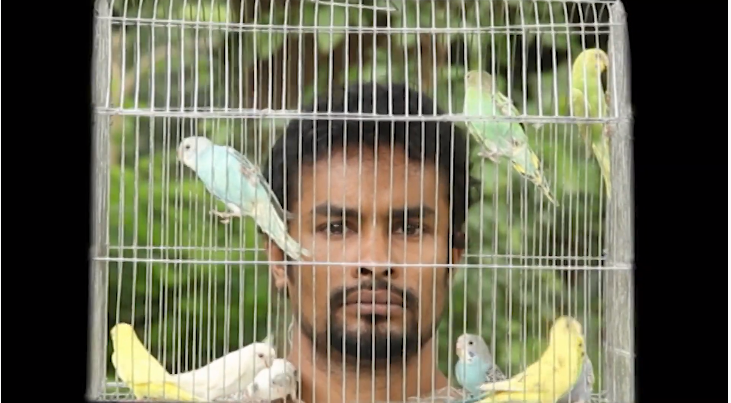
‘Innate’ by Ashim Halder Sagor is one of the most comprehensible yet powerful video arts of the exhibition. Juxtaposing a man's head along with some birds in a cage, his art not only depicts the current confinement the lockdown has brought into human lives, but it also perfectly captures the obstruction of freedom people are facing. Whether it's not getting freedom of speech or the freedom to do things that one wishes to do, the video can be reminiscent of the great Nepali poem ‘Pinjada ko Sunga’, by Lekhnath Poudyal, to Nepali viewers, as it also deals with the theme of comparing the lives of human beings to caged birds.
Similarly, ‘When I died in my own apartment in my own bedroom during a pandemic ’, by Mehreen Hashmi, is another simple yet evocative video art. Narrating her inner turmoil and emotional state, Hashmi, as an abuse survivor, expresses how she has been living with the trauma she has experienced. Though her video is less than two minutes long, the audience can get a glimpse of understanding the psyche of abuse survivors and their trauma, making the video art moving.
Hashmi’s sensitive portrayal of the issue is respectable. Visually, we see the artist doing everyday mundane things, like making coffee or moving in her apartment. But in the audio, she narrates her current emotional state caused by the pandemic, while still struggling from the trauma she experienced, making the video evocative.
Similarly, the exhibition is also filled with themes of failed political leadership in many countries (in relation to handling the pandemic) as well as the perils the lockdown has brought onto the people, which hasn’t received enough attention. For instance, Debanjan Mitra's 'Food’ is an exceptional commentary on the inability of Modi’s government to handle the current pandemic as well as its poor disaster response, in relation to the recent cyclone, Amphan.
In a 30-second clip, he juxtaposes the audio of the Indian prime minister’s famous ‘Everything is good in India’ speech against a visual that displays words like ‘food, disease, virus’ on a white screen. The contrast between what the Indian prime minister says and what is ground reality is stark, and this contrast is depicted through the video by Mitra in a clever manner, making his art elucidating.
Likewise, Sujan Budhathoki’s ‘The Invisible Trap’ highlights the rise of suicidal cases in Nepal that is taking place after the lockdown, an issue the government and people in power haven’t yet paid attention to. Using a burned cigarette as a metaphor for life, he depicts the story of a man who’s in a fragile mental state. The emptiness the man is feeling is depicted through the empty roads of the city while the gloomy background score as well as the jerky camera movement creates a mood that perfectly encapsulates the emotions the man is overwhelmed with at the moment, which is taking a toll on his mental health.
Another underlying theme that appears in most of the works of various artists in the exhibition is death. As the current pandemic has made people value their life more, with the fear of death hovering over people’s minds, people have come to realise how the inevitableness of death can make people's life meaningless. And this thought and acceptance of death is portrayed with exactness by Bhisan Rajbhandari through his video art, ‘Floating Life’. Shot in Aryaghat of Pashupatinath Temple, Rajbhandari uses leaves that are dispersed during cremation floating in the Bagmati, to signify the uncertainty of our lives and how at the end we will just be remains floating in the river.
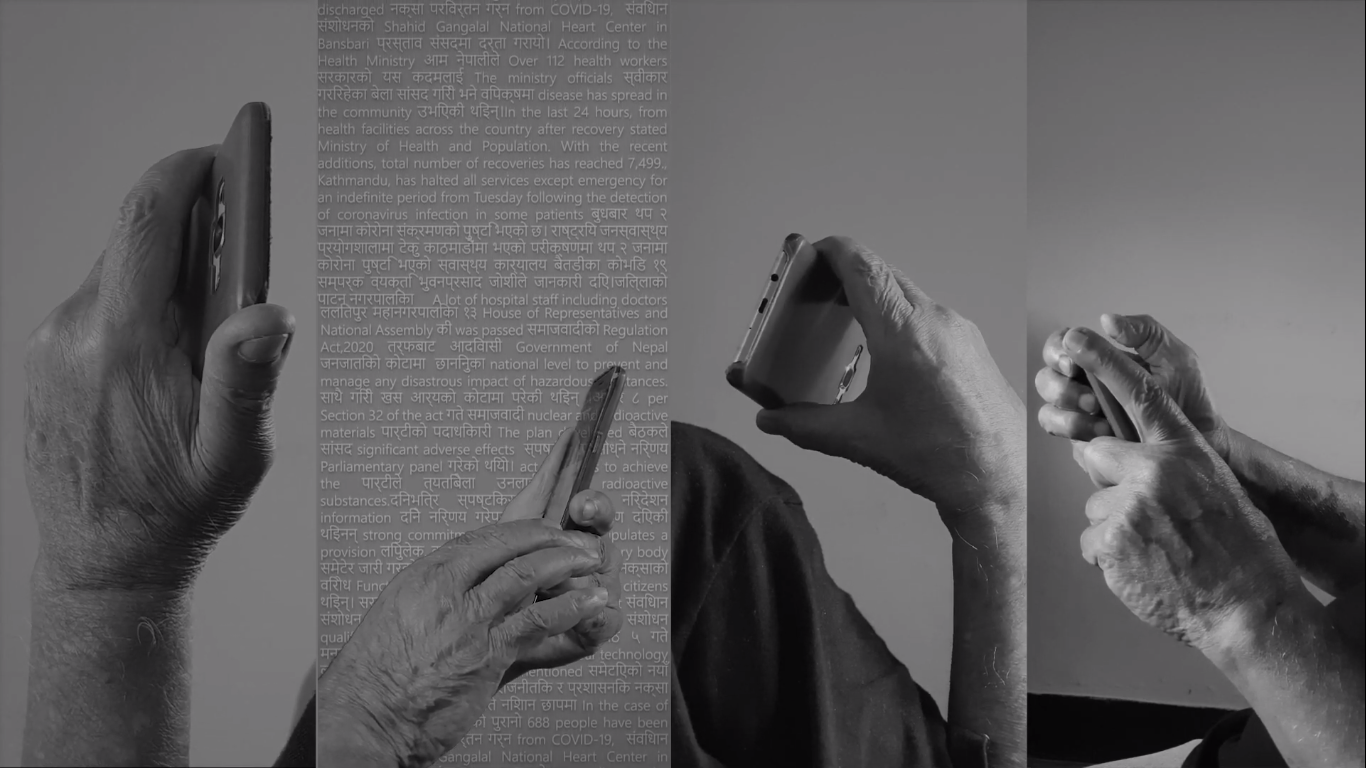
But not all artworks are great; some are peculiar. For instance, Junyi Yang’s ‘Mind Wind’ lacks coherence and visual appeal that can capture the audience’s attention. In her artwork, she has used a table fan which keeps moving. Although the idea may sound good on paper—as in on the e-catalogue—watching the same fan constantly moving with no other image makes the artwork too ambiguous, which can lead the audience to lose their interest.
Likewise, another artwork that was not too impressive was Jupiter Pradhan’s ‘The Walking Dead-21’, which depicts the younger generation as slaves of modern technology. With the use of good visuals and effects, Pradhan is successful in delivering his message, but the length he dedicates to his video is too long, minimising the impact it could have made among the viewers.
And this is where the curator, Manish Lal Shrestha, and the art gallery could have done things better and differently to make the exhibition more immersive and approachable for more people. As there are video artworks of 52 different artists coming from the different milieus, it can become a trying experience for the viewers to watch the entire exhibition in one sitting.
To make things easy for the audience, and so more people can watch it with ease and their own comfort and time, the art gallery has divided the artworks of 52 artists into four separate videos. However, the length of one video itself is 25 minutes long on average, and keeping in mind how distracted one can be when they use YouTube, that is too long to retain attention and make an impact.
Nevertheless, the curator Shrestha should be given due credit for bringing together a fine collection of artworks from artists all over the world, and for providing a space for artists as well as the art lovers to witness the unfolding of an engrossing experiment.




 7.12°C Kathmandu
7.12°C Kathmandu

%20(1).jpg&w=200&height=120)
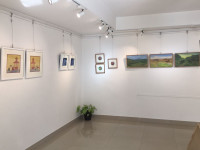
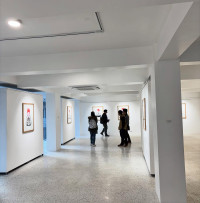
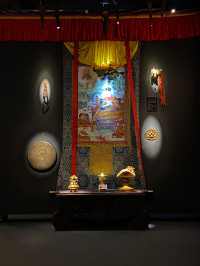
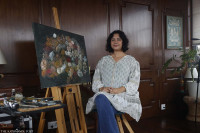
%20(1).jpg&w=300&height=200)
